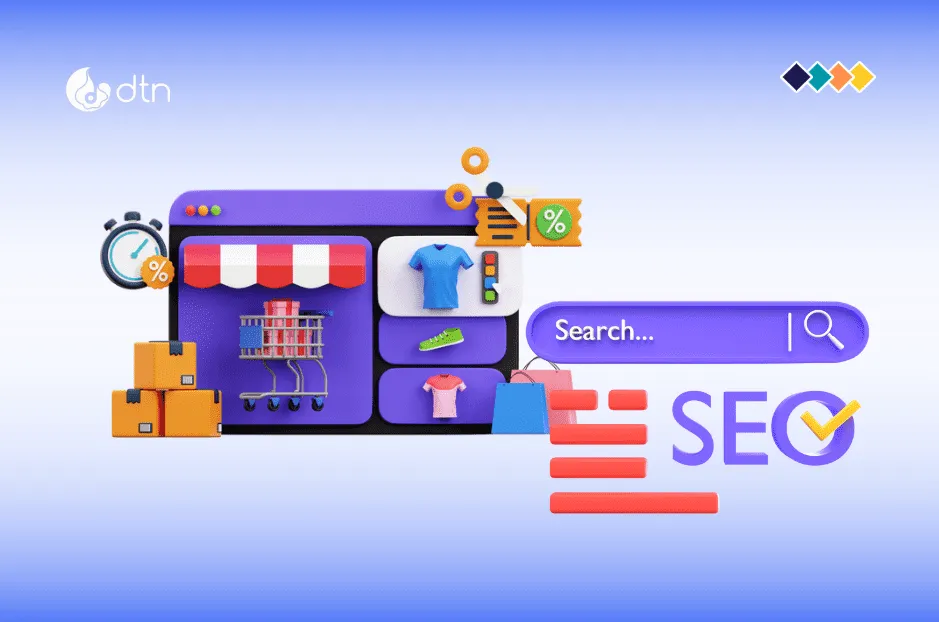Standing out from the crowd requires a strategic approach to content marketing in the fast-paced world of e-commerce. Crafting compelling and relevant content not only engages your audience but also drives traffic and boosts conversions. In this blog post, we’ll explore effective strategies to enhance your e-commerce content marketing efforts, providing practical tips and ideas to elevate your online store’s visibility and appeal.
Table of Contents
1. Understanding Your Audience
To kickstart your e-commerce content marketing journey, begin by understanding your target audience. Conduct thorough research to identify their preferences, pain points, and interests. This insight will serve as the foundation for creating content that resonates with and captivates your potential customers.

To kickstart your e-commerce content marketing journey, begin by understanding your target audience
2. Crafting a Robust Content Strategy
A well-defined content strategy is the cornerstone of successful e-commerce content marketing. Outline your goals, whether it’s increasing brand awareness, driving traffic, or boosting sales. Develop a content calendar that aligns with your business objectives, ensuring a consistent and cohesive approach to your messaging.

A well-defined content strategy is the cornerstone of successful e-commerce content marketing
3. Diversify Your Content Types
Utilize different types of content to maintain the interest of your audience. Beyond product descriptions, consider incorporating blog posts, how-to guides, infographics, videos, and customer testimonials. Diversifying your content not only caters to different preferences but also enhances your overall online presence.

Utilize different types of content to maintain the interest of your audience
4. E-commerce Blog Content Ideas
Generate fresh and relevant content ideas for your e-commerce blog by addressing common customer queries, providing product tutorials, sharing behind-the-scenes glimpses, and creating seasonal content. Additionally, consider leveraging user-generated content, such as customer reviews and testimonials, to build authenticity and trust.

Generate fresh and relevant content ideas for your e-commerce blog
5. SEO Integration
Optimize your e-commerce content for search engines by incorporating relevant keywords strategically. Perform keyword research to discover the terms and phrases that your audience is expected to search for. Implement these keywords naturally in your content, meta descriptions, and product pages to enhance discoverability and improve search engine rankings.

Optimize your e-commerce content for search engines by incorporating relevant keywords strategically
6. Utilizing Social Media Channels
Extend the reach of your e-commerce content by leveraging social media platforms. Share blog posts, product updates, and engaging visuals to connect with your audience. Implement a social media calendar to maintain consistency and encourage audience interaction, fostering a sense of community around your brand.

Extend the reach of your e-commerce content by leveraging social media platforms
7. Embracing Email Marketing
Integrate your content marketing efforts with email campaigns to nurture leads and retain customers. Craft newsletters that highlight new products, exclusive promotions, and valuable content. Personalize your emails based on customer preferences to enhance engagement and drive conversions.

Personalize your emails based on customer preferences to enhance engagement and drive conversions
8. Interactive and Visual Content
Interactive and visual content, such as quizzes, polls, and infographics, can captivate your audience and encourage sharing. Embrace visual storytelling to showcase your products in action, allowing customers to visualize themselves using or benefiting from your offerings.

Interactive and visual content, such as quizzes, polls, and infographics, can captivate your audience and encourage sharing
9. Analyzing and Adapting
Regularly analyze the performance of your content marketing efforts using analytics tools. Important metrics such as website traffic, engagement, and conversion rates should be monitored. Use these insights to adapt your strategy, emphasizing what works and refining areas that may need improvement.

Regularly analyze the performance of your e-commerce content marketing efforts using analytics tools
10. Building a Consistent Brand Voice
Establish a consistent brand voice across all your content. Whether it’s blog posts, social media updates, or product descriptions, maintaining a cohesive and recognizable tone helps build brand identity and fosters a connection with your audience.

Establish a consistent brand voice across all your content
Conclusion
Elevating your e-commerce through content marketing requires a thoughtful and multifaceted approach. By understanding your audience, crafting a robust strategy, and diversifying your content, you can create a compelling online presence that resonates with customers and drives sustainable business growth. Stay agile, adapt to evolving trends, and let your content tell the story of your brand in the vast landscape of e-commerce.
Frequently Asked Questions
We've compiled a list of answers to common questions on E-commerce Content Marketing.
Understanding the audience is fundamental because it forms the basis for creating content that resonates with potential customers. Knowing their preferences, pain points, and interests allows businesses to tailor their content strategy to meet the specific needs of their target demographic, increasing the likelihood of engagement and conversions.
Diversifying content types is crucial to cater to various audience preferences. Beyond traditional product descriptions, incorporating blog posts, how-to guides, videos, and more ensures a more engaging and dynamic online presence. This variety not only keeps the audience interested but also allows businesses to showcase their brand in different ways, reaching a broader audience.
Certainly! Effective e-commerce blog content ideas include addressing customer queries, creating how-to guides, sharing behind-the-scenes content, developing seasonal pieces, and leveraging user-generated content like customer reviews and testimonials. These ideas not only provide valuable information but also contribute to building authenticity and trust.
SEO integration is essential for improving the discoverability of e-commerce content. By strategically incorporating relevant keywords in content, meta descriptions, and product pages, businesses enhance their chances of ranking higher in search engine results. This increased visibility drives organic traffic and improves the overall search engine rankings of the online store.
Regular analysis and adaptation are crucial because they provide insights into the performance of content marketing efforts. By tracking metrics like website traffic, engagement, and conversion rates, businesses can identify what works well and what needs improvement. This iterative process allows for continuous refinement of the content strategy, ensuring it stays effective in the dynamic e-commerce landscape.
Email marketing is valuable in e-commerce content marketing because it allows businesses to nurture leads and retain customers. Crafted newsletters featuring new products, exclusive promotions, and valuable content keep the audience engaged. Personalized email campaigns based on customer preferences enhance customer interaction and drive conversions.
Interactive and visual content, such as quizzes, polls, and infographics, captivates the audience and encourages sharing. Visual storytelling, through images and videos, helps customers visualize product use and benefits, enhancing their connection with the brand. Such content not only engages but also increases the shareability and virality of the brand message.
A well-defined content strategy is the roadmap to success in e-commerce content marketing. It outlines goals, whether it’s brand awareness, traffic generation, or sales, and ensures a consistent approach to messaging. A strategic content calendar helps maintain a cohesive and timely content flow, fostering a more effective and impactful online presence.
Social media plays a vital role in extending the reach of e-commerce content. Businesses can share blog posts, product updates, and engaging visuals on platforms like Instagram, Facebook, and Twitter. Implementing a social media calendar ensures consistent posting and encourages audience interaction, fostering a sense of community and brand loyalty.
Building a consistent brand voice is essential as it helps establish brand identity and fosters a connection with the audience. Whether through blog posts, social media updates, or product descriptions, a cohesive and recognizable tone creates a sense of familiarity and trust. Consistency in brand voice contributes to a memorable and impactful presence in the competitive e-commerce landscape.



